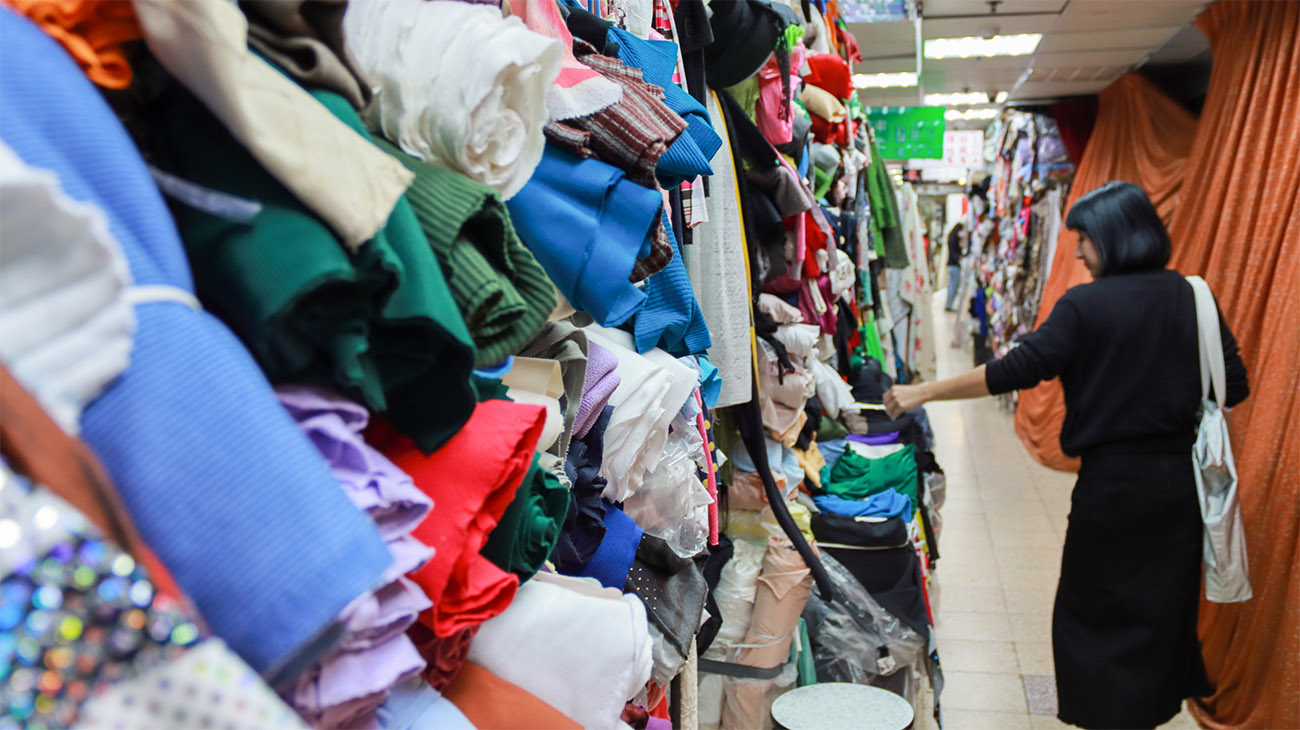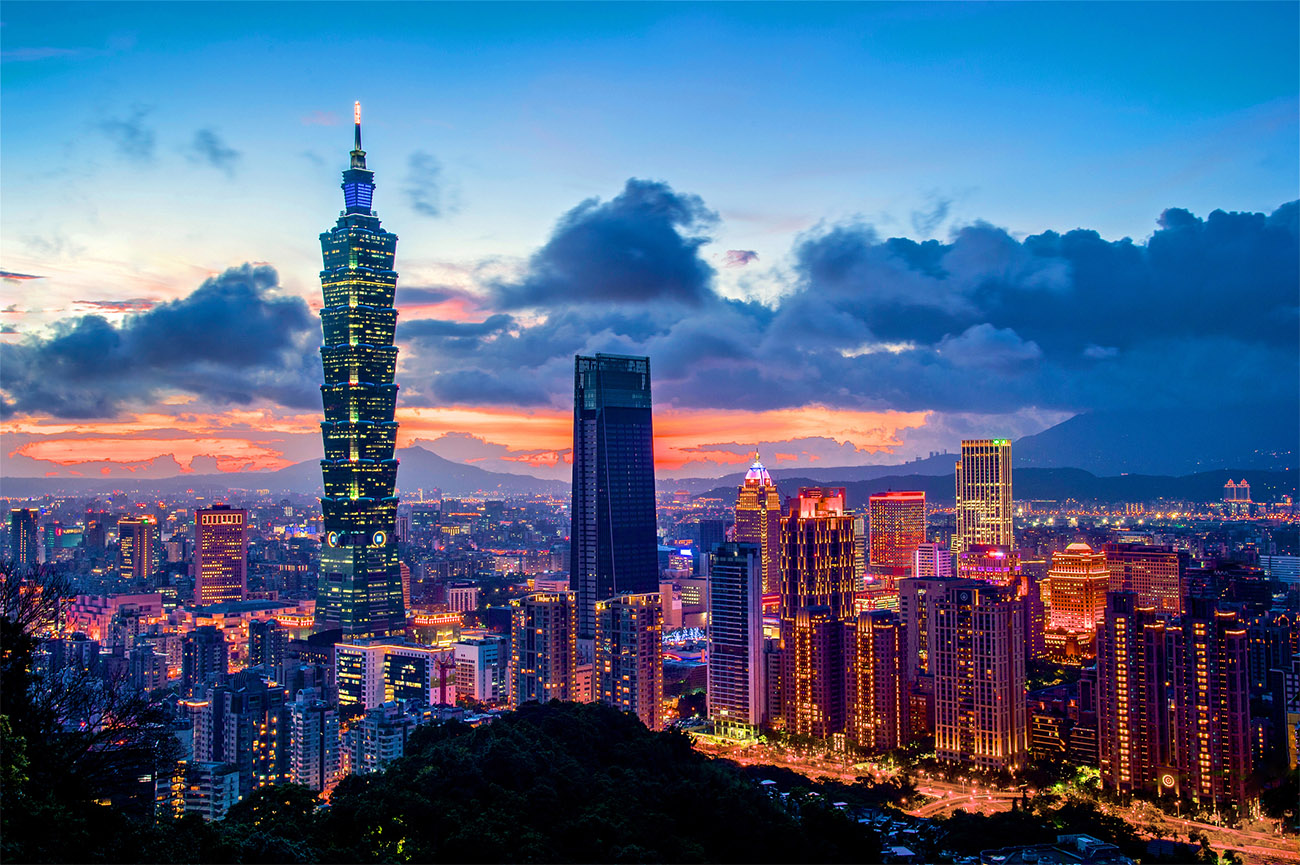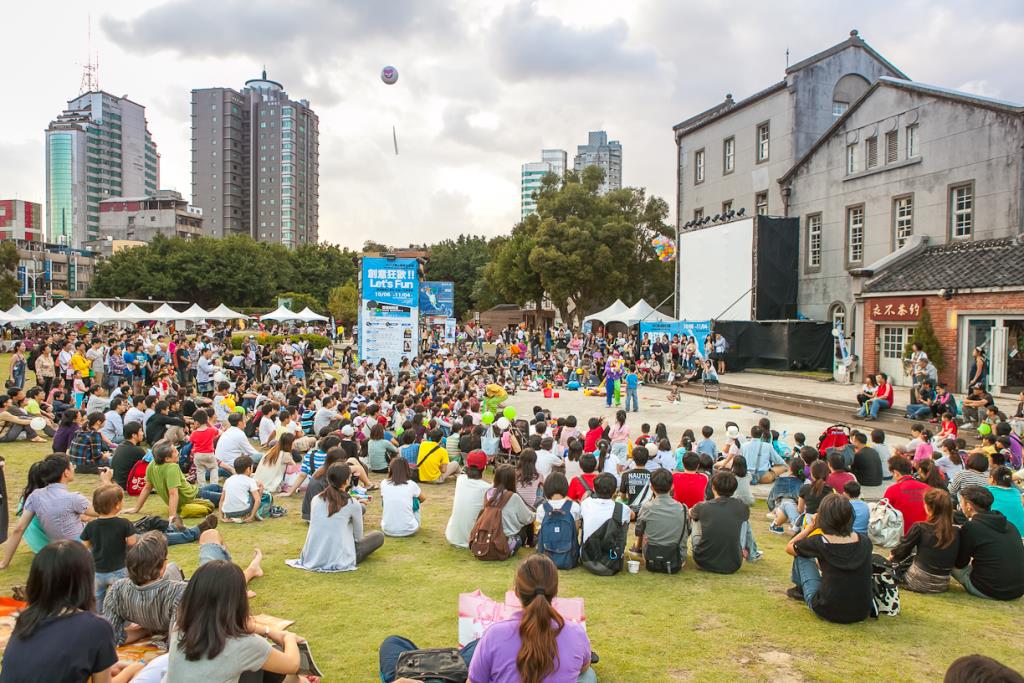The Two Sides of Taipei
Listen to this article
Taipei is a tale of two eras. In one, traditional temples from centuries past and modest food stands crowd timeworn streets. In the other, sleek skyscrapers chock-full of high-tech innovations stretch into the sky while bullet trains zoom by. Within the 105 square miles of Taiwan’s capital, its 2.5 million residents hopscotch seamlessly between the distinct eras.
To truly experience the bustling city’s culture requires swinging between old and new, and of course indulging in the island’s most famous global influence: its food. (Case in point: boba, or bubble tea, originated in Taiwan.)
Era One: Exploring Taipei’s Past
When Portuguese explorers landed in Taiwan in the 16th century, they dubbed it Formosa, meaning beautiful isle. Taipei sits on its northern end along the Tamsui River, where Dihua Street, one of the city’s oldest streets, was established. With roots dating back to at least the 1850s, the area thrived on shops hawking Chinese herbs, tea, dried fruit, and fabric — many of which still line the street today.
In the street’s Yongle Market, locals and visitors converge. They queue at food stands, seeking sticky rice from Li He Fa Glutinous Oil Rice, and fresh sashimi at Wan Long Sushi (which comes with all-you-can-eat fish miso soup). Just up the street, the casual eatery Du Hsiao Yueh serves dan zai noodles, a southern Taiwan specialty.
With more than 15,000 official temples on the island, a standout is Taipei’s Longshan Temple. The ancient place of worship dates to the Qing Dynasty in 1740, with Buddhist, Taoist, and Confucius influences, as well as a dramatic waterfall fountain. Nearby is Bopiliao Historic Block, a preserved street with architecture from the Qing and Japanese occupation eras.
Era Two: Glimpsing the Future
While its rich cultural roots serve as the foundation, innovative technology is also woven into Taipei's fabric. After all, the island has become a next-gen Silicon Valley, producing 90 percent of the world's semiconductors.
Nowhere is that more visible than at Taipei 101. The 101-floor post-modernist skyscraper opened in 2004 to much acclaim. The elevator to the observatory races at nearly 3,313 feet a minute, taking visitors from the fifth to 89th floor deck in 37 seconds.
On the 86th floor is one of the city’s shiniest hotspots, A Joy buffet, boasting nearly 300 menu items. This style of dining is an art in Taiwan, so it’s no surprise this elevated experience is one of the hardest reservations to snag.
Other contemporary landmarks include the Taipei Music Center, which opened in 2020, located right by the Courtyard Taipei. Inspired by the Roman Forum, yet appearing ripped out of the future, the auditorium is the centerpiece of the burgeoning district. Another iconic modern structure is the Taipei Dome, a 40,000-seat venue that primarily hosts baseball games and anchors a mixed-use development.
Bridging Old and New
Acknowledging the juxtaposition of its past and future, Taipei is breathing new life into historic spaces by transforming them into cultural and creative parks for the modern age.
The most impressive example is Songshan Cultural and Creative Park, which has turned a 16-acre tobacco factory from 1937 into a cultural hub. Here, green initiatives are on display at Trash Kitchen, which upcycles used plastics, while Rehow Living Lab invites visitors to bring in old clothes and helps give them second lives. The complex is also the site of the Taiwan Design Museum.
Similarly, Huashan 1914 Creative Park, situated in a former rice wine distillery, now houses a theater, boutique shops, and cafes; the latter includes an outpost of Chun Shui Tang, credited for inventing boba tea. Over at Taiwan Contemporary Culture Lab, former government buildings are now a center of progressive art exhibits. The Japanese-style Red House, which originated as a 1908 public market, now hosts makers’ craft shops.
But the most fascinating finds are those slightly out of sight. Back on Dihua Street, a small staircase leads to the top floor of the historic Watson & Co. building, opening into Antique Bar 1900. This delightful ode to the Belle Epoque serves coffee and cocktails, bridging all senses of time and space right above Taipei’s oldest street.
Where to Stay
Experience this collision of past and future for yourself with a stay at the Courtyard Taipei. Located on top of the Nangang MRT, HSR, and train station, you’ll have easy access to transportation to take you to all the attractions this vibrant city has to offer. After a day of adventuring, dine on authentic Cantonese food at Moonlight or enjoy a relaxing cocktail at The Lounge. Use Your Club Points to book your stay.
Rachel Chang is a seasoned travel and pop culture journalist and editor, writing for Condé Nast Traveler, Travel + Leisure, and more. The reluctant runner (but four-time marathoner) is always hunting for the tastiest stinky tofu.
Vacation Life writer Tyler Bohlman contributed to this article.
Book Your Stay
https://owners.marriottvacationclub.com/timeshare/mvco/hotelandluxuryresidence
Marriott Vacation Club℠, Asia-Pacific*
https://login.vacationclubap.com/contactus.jsp


